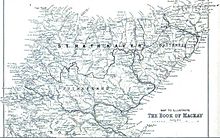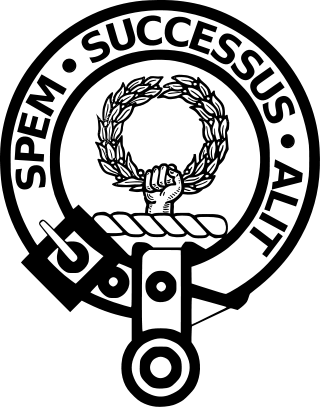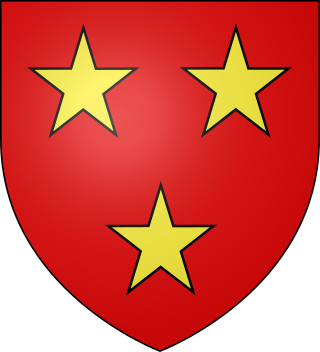Feud with the Rosses

Iye Roy Mackay's father, Angus Roy Mackay, had been killed in 1486 at the Battle of Tarbat in a feud over lands with the Clan Ross. [1] Soon after this the Mackays, under John Rivach Mackay (second son of Angus Roy Mackay) and William Mackay who was the chieftain of the Mackay of Aberach branch of the clan, invaded Ross and defeated the Clan Ross at the Battle of Aldy Charrish in 1487 where Alexander Ross of Balnagown, chief of the Rosses was killed, along with seventeen other landed gentlemen of the province of Ross. [2] Historian Angus Mackay however disputes the account given by Sir Robert Gordon, 1st Baronet, who himself was a son of Alexander Gordon, 12th Earl of Sutherland, and who says that at this battle the Mackays were supported by a force provided by the Earl of Sutherland. [3] Mackay states that the feudal superiority of the Earls of Sutherland over the Mackays, as claimed by Sir Robert Gordon, "nowhere existed save in his own fertile imagination". [1] Angus Mackay says that it is also unlikely that the Earl of Sutherland who was married to a daughter of Ross of Balnagown would have assisted against his own father-in-law. [1] Thirdly, Angus Mackay says that the Earls of Sutherland are not mentioned in a remission from the king to John Rivach Mackay in 1494, and so it seems that Sir Robert Gordon had tried to snatch the victory of the Mackays over the Rosses at Aldy Charrish, but that the facts are against him. [1] In 1490 James IV of Scotland granted to David Ross, nephew and heir of John Ross, and grandson of John Ross of Balnagown, the lands of Strathoikel and Strathcarron, which had formerly belonged to Morgan Neilson Mackay. [1] [note 1] Likewise, on 15 March 1504, Iye Roy Mackay 10th of Strathnaver secured from the king the lands of Ferencostrig, Strathhalladale, Creichmore, Assent, Coigach, Gruids and Strathfleet. [1] On 15 February 1506, Iye Roy Mackay caused the charter granted by Donald of Islay, Lord of the Isles, and by which the Mackays laid claim to these lands, to be recorded. [1] However, the Lords of Council decided that the lands had belonged to Euphemia II, Countess of Ross. [1] Although John Rivach Mackay received a remission from the king in 1494, the blood feud with the Rosses appears to have continued as David Ross of Balnagown and Iye Roy Mackay of Strathnaver were summoned to appear before the Earl of Argyll who was the Lord High Chancellor of Scotland. [1] On 4 October 1496, each of them were bound by extending their hand to Argyll in the king’s name to keep the peace towards each other and that their "folks sal be harmless and skaithles", under the penalty of 500 merks if they failed. [1] Notwithstanding the apparent reconciliation, David Ross of Balnagown and his brother Hucheon Ross, brought an action to the Lords of Council against the Mackays for spoils taken from their lands eight years earlier. [1]







